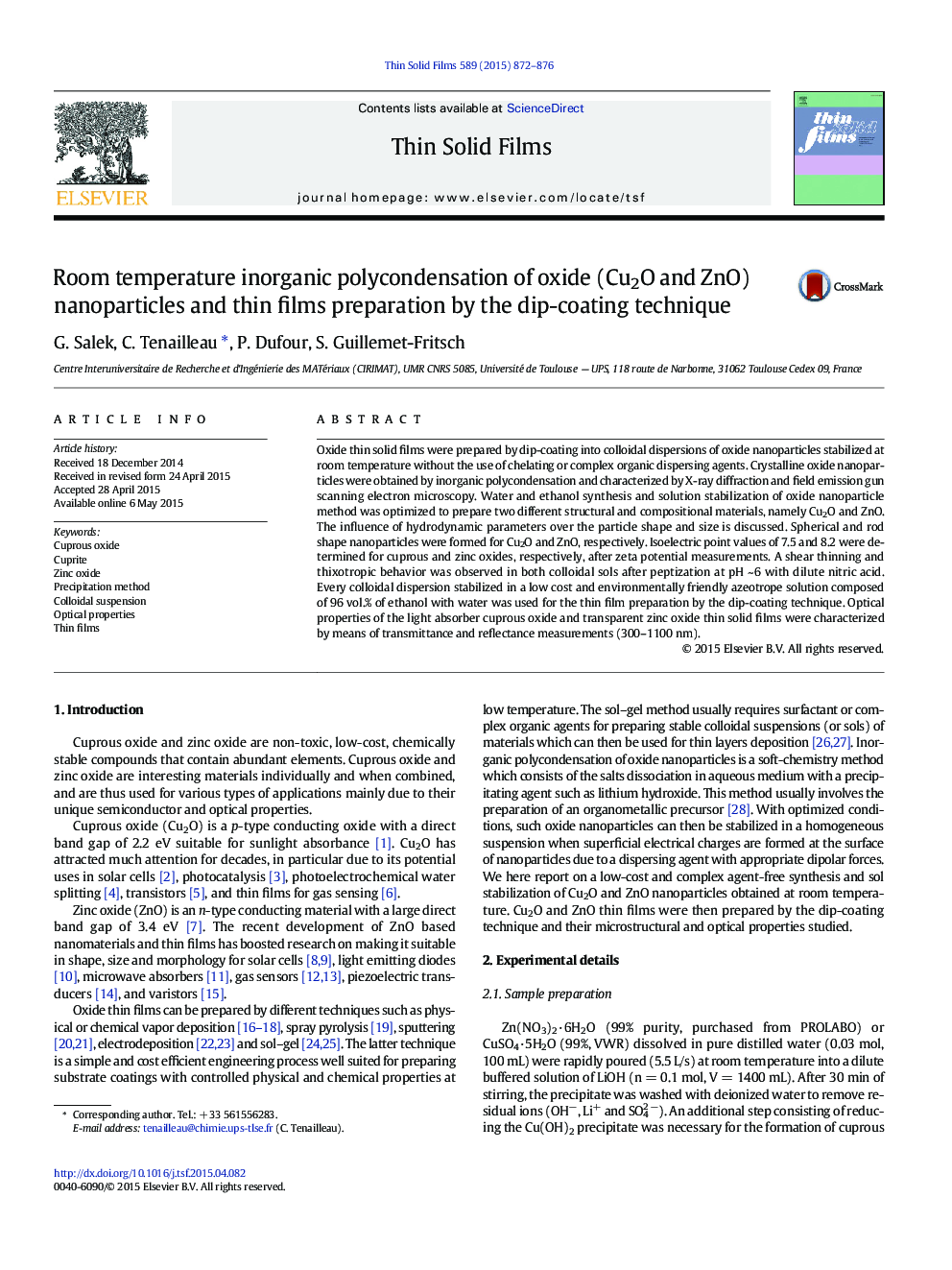| Article ID | Journal | Published Year | Pages | File Type |
|---|---|---|---|---|
| 1664661 | Thin Solid Films | 2015 | 5 Pages |
•Room temperature inorganic polycondensation of crystalline oxides•Water and ethanol synthesis and solution stabilization of oxide nanoparticles•Low cost method for thin solid film preparation
Oxide thin solid films were prepared by dip-coating into colloidal dispersions of oxide nanoparticles stabilized at room temperature without the use of chelating or complex organic dispersing agents. Crystalline oxide nanoparticles were obtained by inorganic polycondensation and characterized by X-ray diffraction and field emission gun scanning electron microscopy. Water and ethanol synthesis and solution stabilization of oxide nanoparticle method was optimized to prepare two different structural and compositional materials, namely Cu2O and ZnO. The influence of hydrodynamic parameters over the particle shape and size is discussed. Spherical and rod shape nanoparticles were formed for Cu2O and ZnO, respectively. Isoelectric point values of 7.5 and 8.2 were determined for cuprous and zinc oxides, respectively, after zeta potential measurements. A shear thinning and thixotropic behavior was observed in both colloidal sols after peptization at pH ~ 6 with dilute nitric acid. Every colloidal dispersion stabilized in a low cost and environmentally friendly azeotrope solution composed of 96 vol.% of ethanol with water was used for the thin film preparation by the dip-coating technique. Optical properties of the light absorber cuprous oxide and transparent zinc oxide thin solid films were characterized by means of transmittance and reflectance measurements (300–1100 nm).
